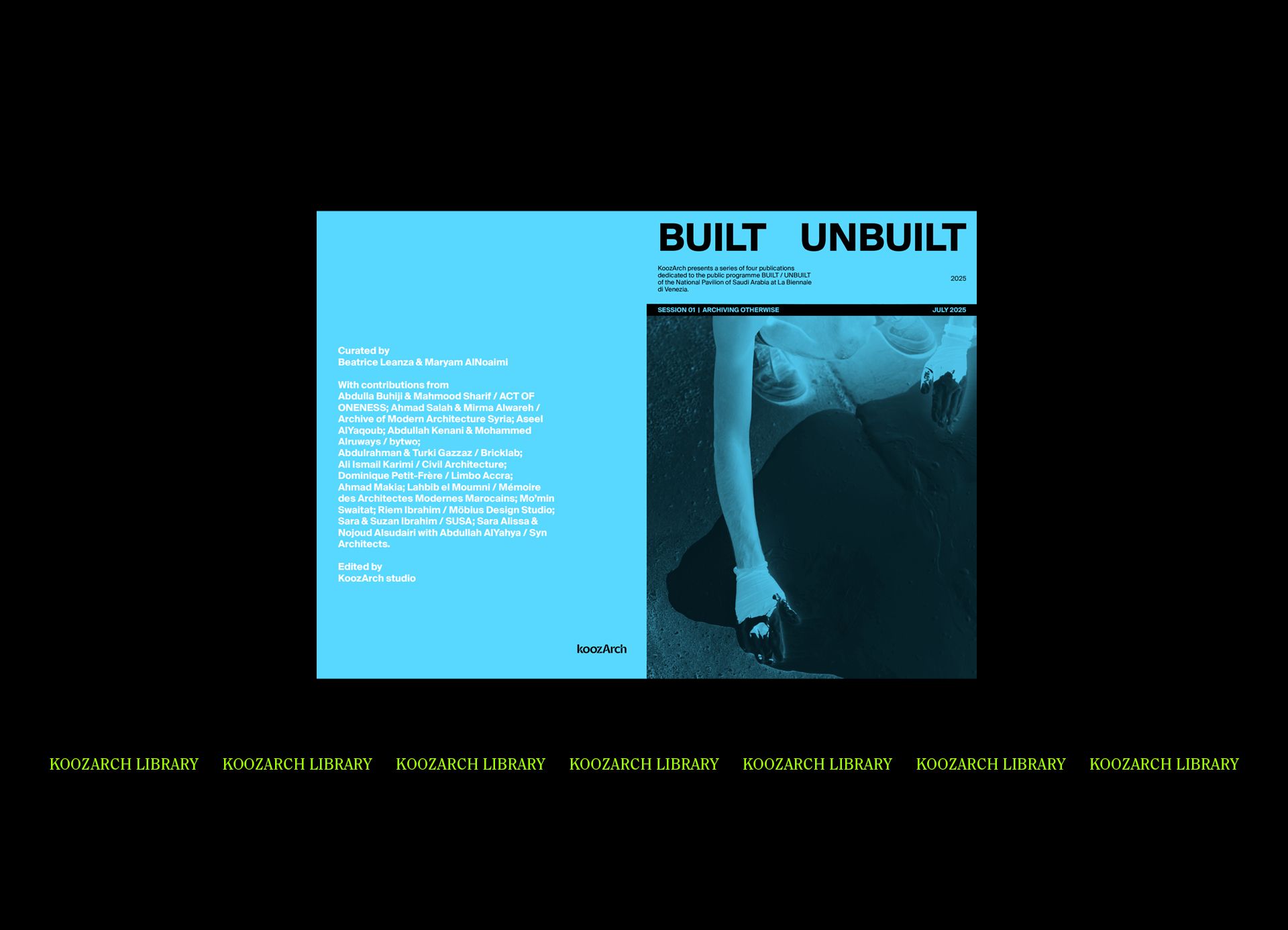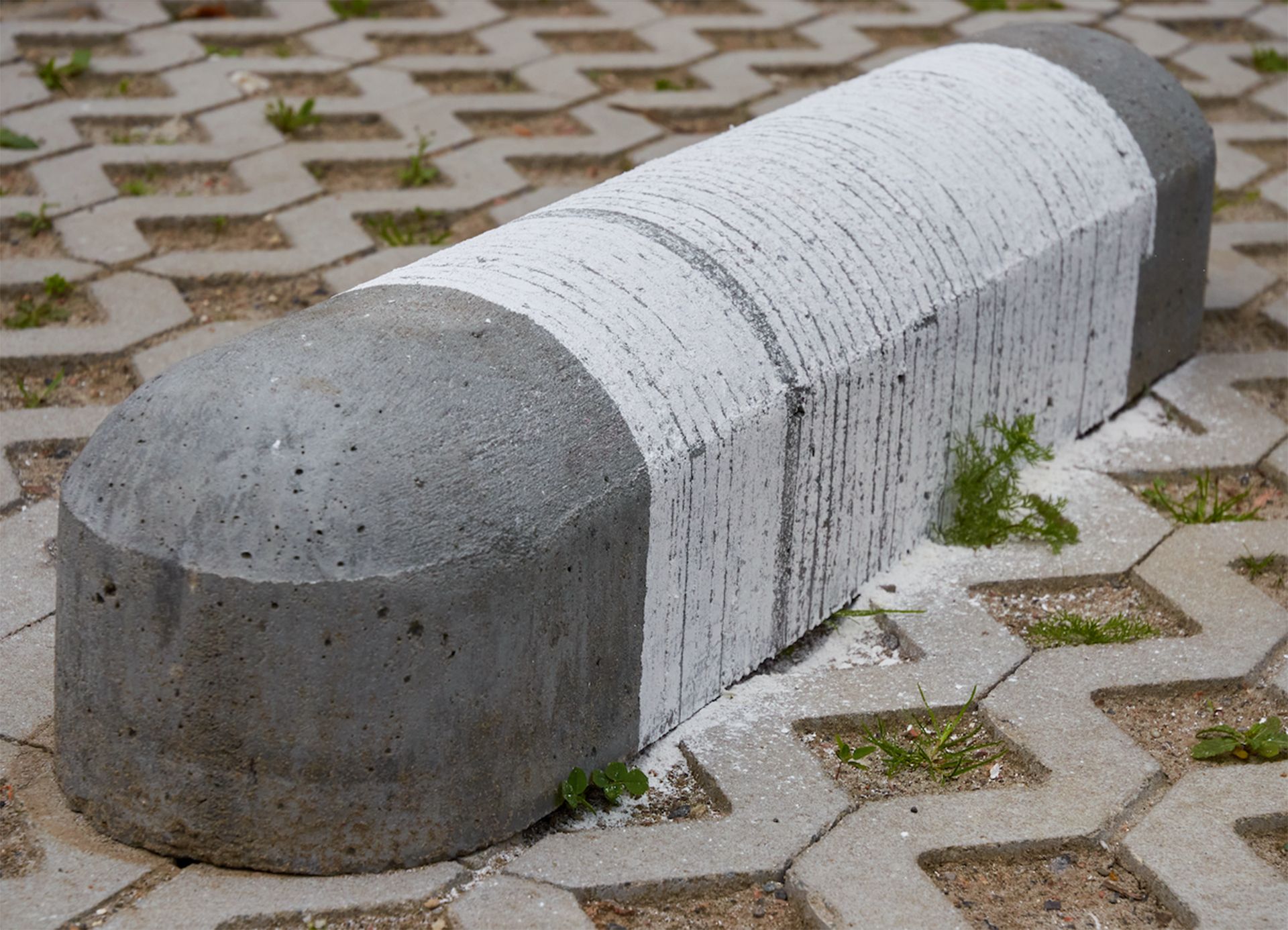“You need imagination in order to imagine a future that doesn't exist.”
- Azar Nafisi
This simple yet profound quote, written by the professor and author of the international best seller “Reading Lolita in Tehran”, resonates far beyond the realm of literature. For the KoozArch team, this cherished agency of the imagination is the pulsating heart which pumps the blood through our veins and across our mediums, from the digital to the physical, the editorial to the curatorial and research.
This year marks KoozArch’s first “entire” calendar year as an editorial magazine and research studio, seeking to nurture new unbuilt architectural imaginaries. Once upon a time, the KoozArch project began as a platform for unbuilt, student speculations; back when I was a student at the Architectural Association in London myself, grappling with that most troublesome question “what is architecture?”. As a true laboratory for experimentation, I am forever grateful to the AA for having stretched my mind beyond a conception of architecture as built buildings. Today, as a practising architect and researcher, and at a time when we so desperately need new imaginaries, I hope that KoozArch can be a safe harbour to host and exchange critical thoughts. Eliding metrics of failure and success, right and wrong, we hope to keep the discipline grounded in critical research even as we nurture ambitions to bring about the necessary systemic changes that would ensure more inclusive and just planetary futures.
At the heart of our project is the act of story-telling. That is to say, in order to rethink the world; to imagine other patterns, structures and relationships between us, the act of telling stories has always been essential: if this was true for our ancestors, it is certainly a need we recognise today, as well as reclaiming the role of story-teller for architects, artist, curators and designers. In this past year we have continued to build on the format of the interview, offering this as a space where both emergent and established practitioners could discuss their ideas and work in their own voice, nurturing a dialogue which is not paraphrased but is rather more direct, acknowledging individual voices. Building on KoozArch’s foundation as a space where students would platform their speculative imaginaries, our work involves respecting and embracing the power of vision with experience in juxtaposition. Over the last year we have built on these imaginaries and expanded to the critical research undertaken by established practitioners both within and without the recognised spaces of cultural institutions and academia. Transcending the singular and embracing the collective, we have been evermore dedicated to expanding our remit from inquisitive interviews to conversations of generosity between multiple practitioners, establishing the magazine as a space of encounter, exchange and collective imagination between individuals with attuned or even divergent yet complementary interests. At a time where we cannot afford to be segregated within our own professional silos, we hope that our community is enriched by expanding the discourse beyond the disciplinary boundaries of architecture to art, literature, anthropology etc.
In order to rethink the world; to imagine other patterns, structures and relationships between us, the act of telling stories has always been essential: if this was true for our ancestors, it is certainly a need we recognise today, as well as reclaiming the role of story-teller for architects, artists, curators and designers.
Along with the questions of “What is architecture” comes the questions of “who has the right to talk about architecture”. Drawing on Albena Yaneva and Bruno Latour’s understanding of architecture "as process, as flight, as a series of transformations'', as a discipline which investigates our modes of inhabitation and planetary infrastructures, we dare say that each and every one of us has the right to speak up; that in fact the most compelling conversations do in fact occur when diverse disciplinary and experiential perspectives are catalysed. Shifting between online and offline, this approach has led us to curate conversations as All Roads Lead to Aqua, an exchange hosted on occasion of the Venice Biennale Finissage where curators from Denmark, Georgia, Ireland and Portugal’s national pavilions were invited to converse with the Venetian publishers wetlands on the geopolitics of water between art, fiction and non-fiction. Looking into the new year, we cannot wait to share the talks entertained with sixteen practitioners hosted with rearc institute for their second series of the podcast Architectures of Planetary Wellbeing. With diverse disciplinary backgrounds spanning art, design, music, performance, literature and back to architecture, we hope to reflect on the individual inheritances we each carry with us, and the means through which these shape our agency and actions from the local to the planetary.
Drawing on Albena Yaneva and Bruno Latour’s understanding of architecture "as process, as flight, as a series of transformations'', as a discipline which investigates our modes of inhabitation and planetary infrastructures, we dare say that each and every one of us has the right to speak up; that in fact the most compelling conversations do in fact occur when diverse disciplinary and experiential perspectives are catalysed.
Indeed, the term “planetary” is one which in the last year has become very dear to us, as we attempt to highlight the interconnectedness of our Earth — not so much in terms of “global” mechanisms like markets and capital flows, but rather in terms of the broader, intersectional connotations and relations of the term. Recognising the socio-environmental, socio-economic, and socio-political crises that afflict all living and non-living entities, we must expand our view on the parameters that govern daily life. As architects we are active participants of such crises; thus our first “issue” format — issues comprising specially commissioned, collated and highlighted contributions on a particular theme — was titled Agents Provocateurs: agitate normality. The collection of articles within this “issue” demonstrates a challenge to the foundations and limits of architecture as a profession, as a theory, as a way of understanding the world. Agents Provocateurs: agitate normality recognised architecture’s crisis on the global stage, and sought to to claim back the relevance of the discipline by asking what is the agency of architecture today? Specifically, the issue was focused on those systemic thinkers who acknowledge that the current broken contract between humanity and ecology requires circulatory and regenerative practices to become normalised constraints in education and practice, with urgency.
Indeed, the term “planetary” is one which in the last year has become very dear to us, as we attempt to highlight the interconnectedness of our Earth — not so much in terms of “global” mechanisms like markets and capital flows, but rather in terms of the broader, intersectional connotations and relations of the term.
From the individual practitioner to the institutions that often circumscribe the constitution of discourse within architecture and design: our second issue focused on what “playing fair” might possibly mean. Fair Play was a call to action, a catalyst of ideas and an accelerator of knowledge that aimed to build inclusive, collaborative bridges across disciplines, challenging institutional boundaries through a fundamental three-part question. Spanning from archival practices, to participatory workshops and notions of accessibility (amongst others), the series platformed the diverse perspectives embraced by institutions of all scales, spanning a multitude of geographies: from New York to Colombo, and Buenos Aires to Bordeaux. The third in the series of KoozArch Issues will inaugurate in the new year, looking into the fringes of pedagogy: an often visited yet always evolving arena, with the critical impetus of forming, training and to some extent defining the nature of future practitioners.
The past year — and particularly, the last few months — have been especially hard as the world has and continues to be forced to bear witness to war in Ukraine and genocide in Palestine and the Gaza strip, among the many other conflicts which ravage through our planet on a daily basis. One truth that can be observed is the way that particular atrocities have activated and strengthened an intersectional awareness of many other conflicts, oppressions and spatial injustices, which is testament to the exponential strength of building solidarity. As a publication which relies so heavily on words, we realised that it is in moments like these that we must offer our platform to those voices which may not otherwise be heard. We are humbled to have been able to platform messages and voices from groups like DAAR (Alessandro Petti and Sandi Hilal), Yara Sharif & Nasser Golzari with Architects for Gaza and the curators of Ukraine’s Pavilion to the Venice Biennale. In the coming year we would continue to offer KoozArch as a space for solidarity, where we may host the often uncomfortable yet immanent and very necessary conversations — and we’re always open to hearing from you, as to what those should be.
One truth that can be observed is the way that particular atrocities have activated and strengthened an intersectional awareness of many other conflicts, oppressions and spatial injustices, which is testament to the exponential strength of building solidarity. As a publication which relies so heavily on words, we realised that it is in moments like these that we must offer our platform to those voices which may not otherwise be heard.
Aware that “one tree does not make a forest”, in 2024 we hope to continue to grow the KoozArch network and cultivate the online magazine as a free, accessible and critical endeavour — one which seeks to nurture conceptual and material exchanges on and around how the architectural profession can and must dismantle existing binary structures, redefine inadequate value systems and shape new inclusive canons. May 2024 be a year of new futures and collective unbuilt imaginaries.
Bio
Federica Sofia Zambeletti is the founder and managing director of KoozArch. She is an architect, researcher and digital curator whose interests lie at the intersection between art, architecture and regenerative practices. In 2015 Federica founded KoozArch with the ambition of creating a space where to research, explore and discuss architecture beyond the limits of its built form. Parallel to her work at KoozArch, Federica is Architect at the architecture studio UNA and researcher at the non-profit agency for change UNLESS where she is project manager of the research "Antarctic Resolution". Federica is an Architectural Association School of Architecture in London alumni.
Featured Image
"Writing in front of the Kunstmuseum Basel, Basel, Switzerland" (June2022). Image courtesy Francesca Cocchiara, Sergios Strigklogiannis, Atlas of Urban Mythologies (dpr-barcelona, Irish Architecture Foundation, 2023) as featured in Stories for Our Time: LINA Writing Awards 2023





